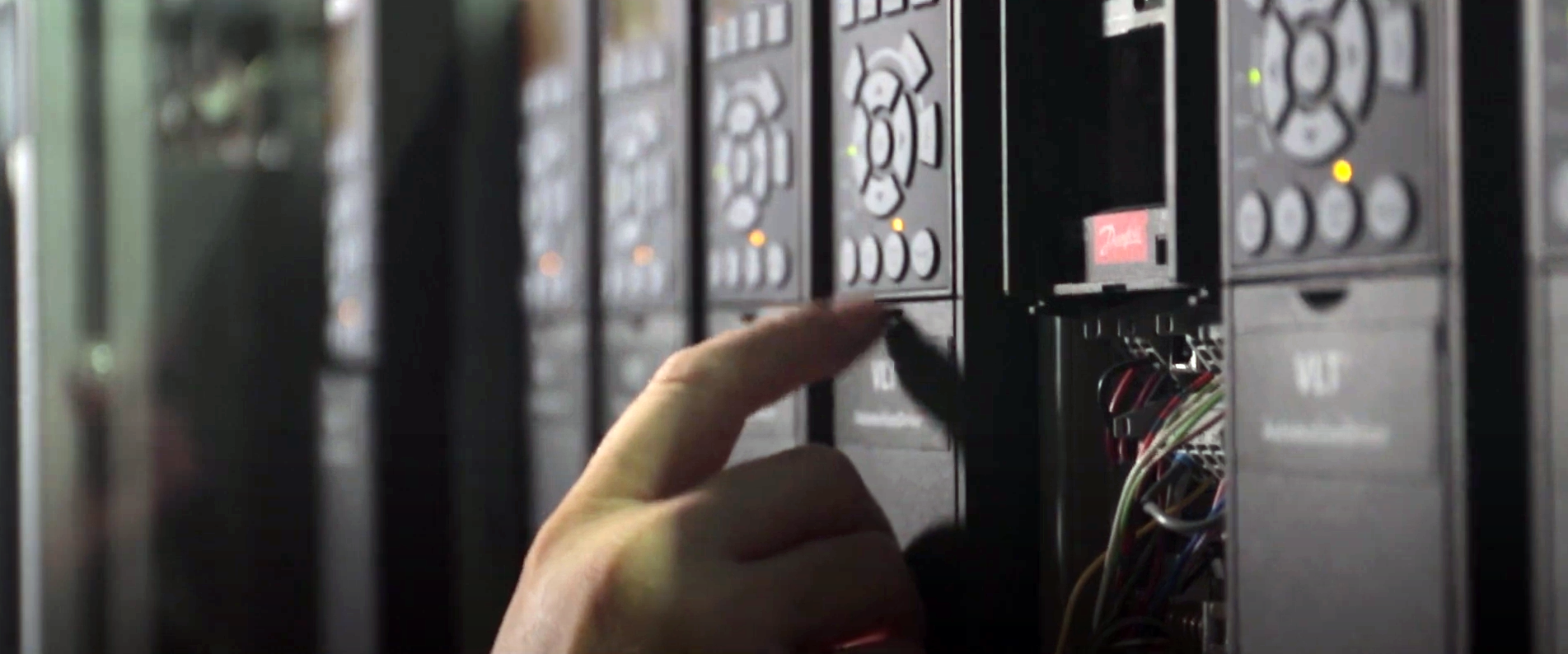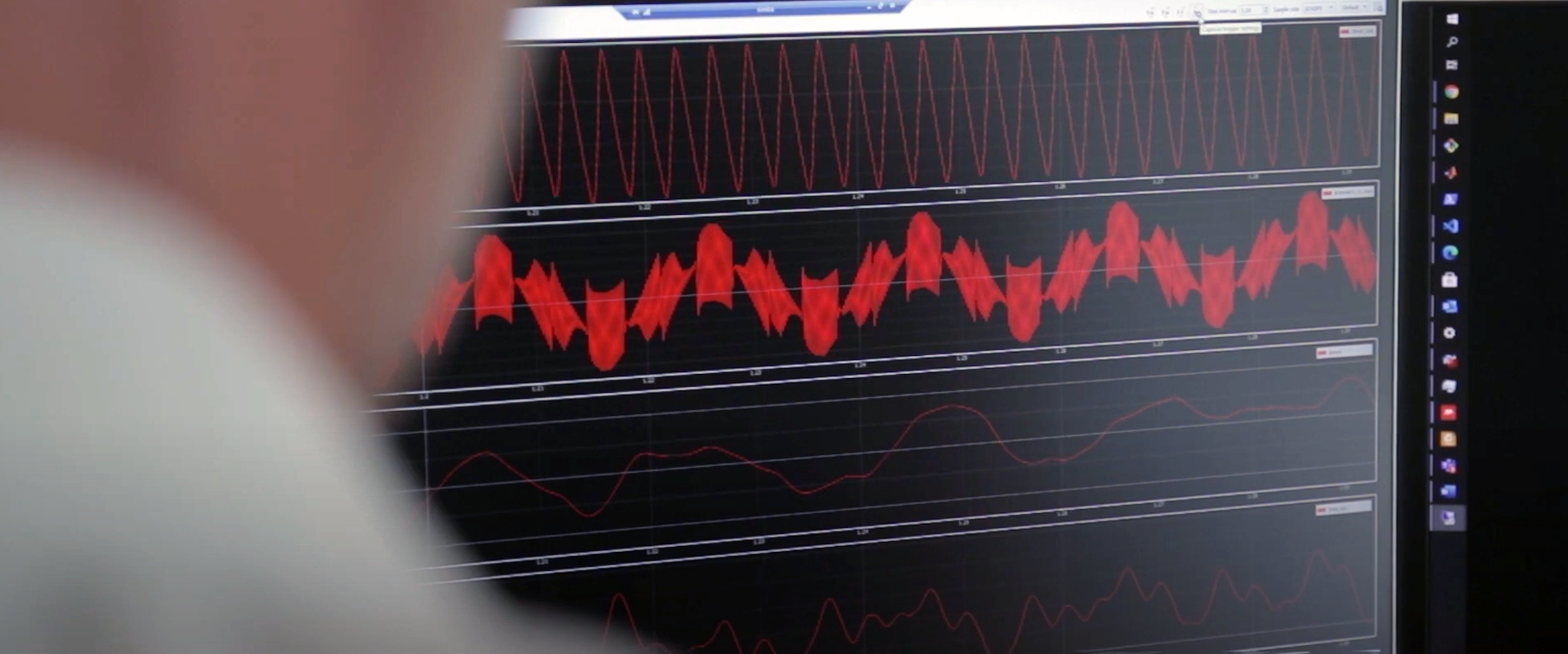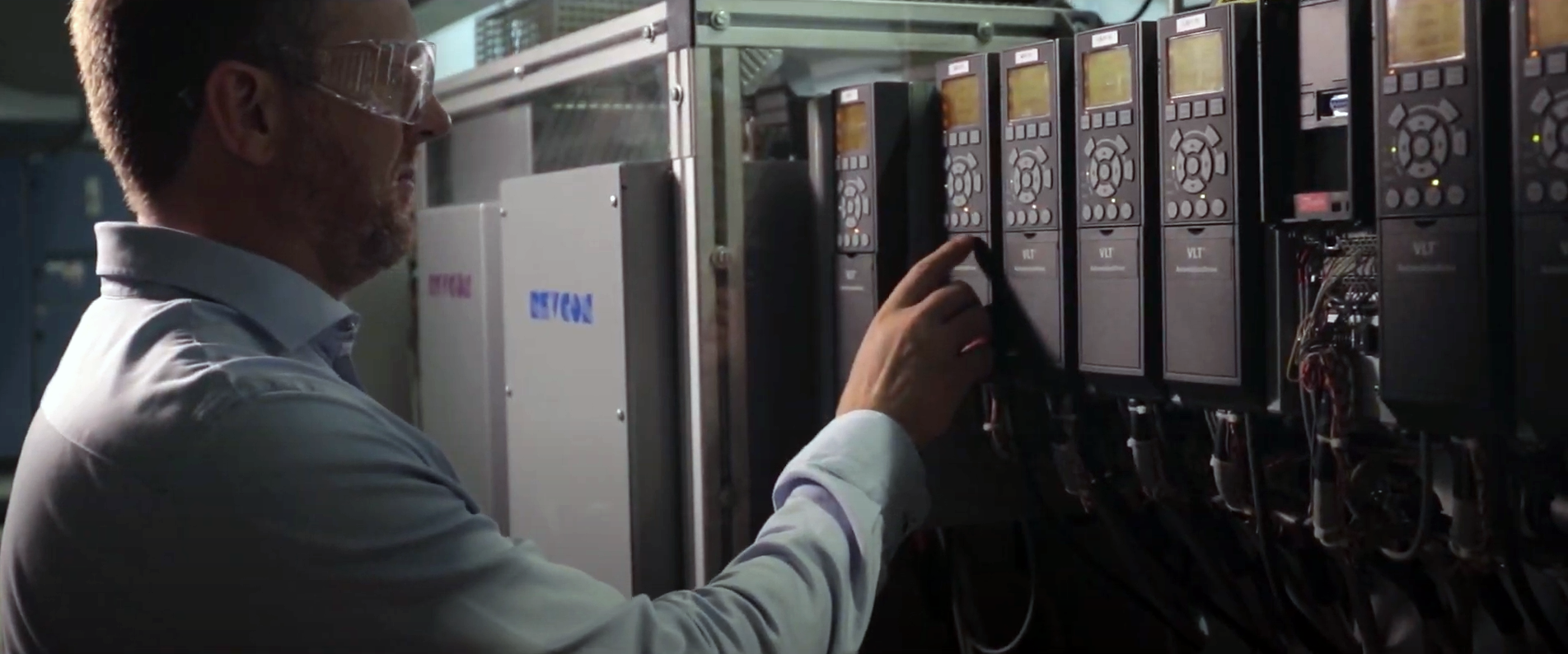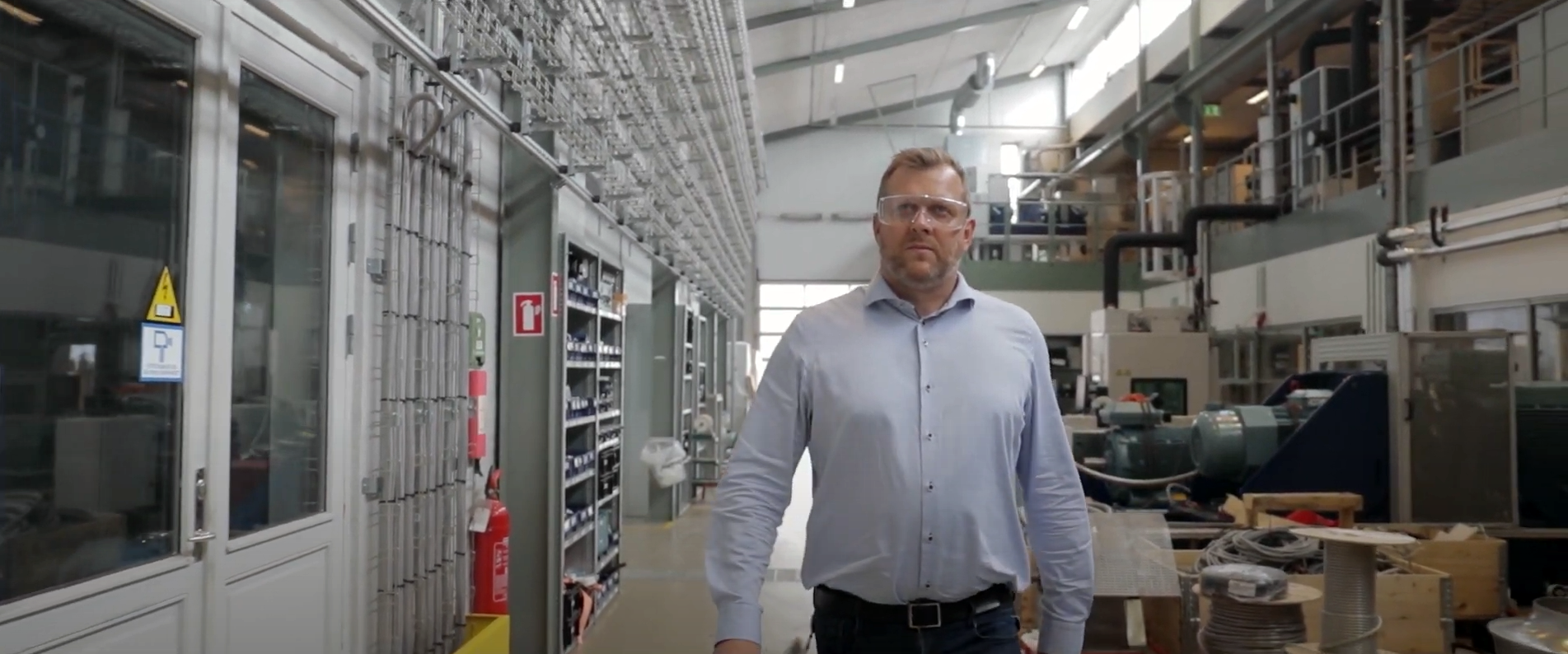-1.png?width=1800&name=MicrosoftTeams-image%20(4)-1.png)
Blog Highlights
- Having the same HIL system as a tool streamlines cross-team coordination and speeds up customer response time.
- With Typhoon HIL, Danfoss' customer response time went from one or two weeks down to a few hours.
- For Danfoss customers, HIL Tested means fast customer response times.
Michael Laursen is the Director of Digital Products at Danfoss Drives in Gråsten, Denmark. He leads the global team on simulation initiatives and is one of the central figures driving the adoption of Hardware-in-the-loop (HIL) technology. In this blog interview, he discusses how using Typhoon HIL testbeds streamlines cross-team coordination and saves on customer response time. Watch the short video above or read the full interview below to find out more.
What is a key challenge of being a pure player in the Drives business?
We focus on AC drives and our goal is to be able to support all different motor types in all sizes. When you are a pure player, then you need to be good at easily controlling many different machine types that your customers are using.

Michael Laursen at one of the test benches.
What was your product development process like before you introduced a HIL system?
Before we had the HIL system, it was not possible to test as early as we needed to test. It was also not possible to test all the different configurations in the lab because it would take a lot of time. Before we started using HIL and model-based design, we could not give feedback directly from our customers to our developers after a change in software was made. We were therefore postponing the majority of our validation to just before the release. That can be really challenging, because if you would find errors in that phase, it delays the release of your software and of your product.

Interaction with the drives.
At what stage of your quality assurance process do you use HIL?
The C-HIL (Controller HIL) system can show the real-life behavior experienced in the field, so we are very confident that our models in HIL match what the customer sees in real life. We do model-based design when developing a feature, making models of our software, and creating unit tests around them.
When we go into integration testing, that's where HIL really comes into the picture, because here we are taking our hardware and combining it with the software that we have developed. We put the control software together with the real control card. Since we have an emulated product in HIL, we can start testing without having a physical product. We don’t have to have the real hardware set up in our lab. Here we are testing what is not possible on the unit test level, but we also start testing interfaces in the product according to software and how the hardware is made.
Then, before releasing, we do validation tests. Some of the validation tests are also done in Hardware-in-the-Loop, but they are mainly done in the lab. And those are the ones that we want to have the least amount of time spent. You can say we have a three-step approach to our quality insurance: starting from full simulation, through HIL testing the real controller, to final HIL and lab validation.

Reading the real-time simulation results.
How does using model-based HIL systems help different Danfoss teams work together?
We can integrate hardware and software much earlier, do more customer tests, and test more configurations, thanks to automated scripts and Hardware-in-the-Loop systems.
If we take front-end customer support, they also have a HIL system. When the customer has a problem, they can send us the configuration file that contains information on what kind of drive they use, what is the motor type, and the configuration of the motor parameters. Then our customer support can put that into the HIL system and see that the drive doesn't work together with the motor as expected, or if we find a blind spot. We can then send all this data directly to R&D, because we use the same system. They then start debugging and checking if there are some requirements that we don't meet.
“By having the same HIL system as a tool between different teams, it is really easy to just move the data around.

The wall of Danfoss Drives values at Gråsten, Denmark.
Let's dive down to a specific use case study, like the Belgium use case on FC302. Could you tell me more about that?
We have a competence center in Gråsten with front-end customer support. We provided them with a system with our active FC302 products. In this use case, the customer had a special motor, something that we don’t normally see. The drive requires a check if it is connected to a motor in order to start. But due to this special motor, the drive detected that there's no motor connected, so the customer reached out with this problem. They sent us the configuration so we could put it in the HIL system together with the drive to find the issue.
We could then see that with this motor type combination a warning is produced. We then sent the data to the R&D guys that had a look at it. They had to do some adjustments and could test the new software release in HIL before they shipped it to this customer. The customer immediately reported back that all is working well with the updated drive software. You can see that the flow is really easy in this way.
We saved in travels and gained confidence. With HIL, your engineers don't need to go on-site to check the parameters. When you have a simulated system, then you are fully in control of the configuration and can see if what the customer sees in real-life matches what we have modeled in our system, or if faults or misbehavior occur.

A day at work for Michael Laursen at Danfoss Drives, Gråsten, Denmark.
What is the main thing you would highlight as a takeaway message here?
The biggest improvement in adopting HIL was in the response time to customers. With HIL, we can configure our emulated drive to match a specific motor from the customer with just the motor configuration file, and already see it working in simulation. That way we can quickly react to special motor type requests and special applications from customers without having so many motors in our lab. This ensures quality support and a fast reaction time, even when helping remotely.
“With Typhoon HIL, our customer response time goes from one or two weeks down to a few hours.
Faster testing also brings several benefits to developing and improving our own products. We can test broader, earlier, and scale it. We can have HIL systems running during the night, testing everything autonomously, and not have guys doing tests manually for 24 hours. That way, most of the tests are done well before the release.

Michael, walking through the Danfoss Drives testing facility in Gråsten, Denmark.
What does HIL Tested mean for Danfoss Drives?
For Danfoss customers, HIL Tested means fast customer response times.
Would you like to integrate HIL into your work as well?
Let's discuss how we could best support your work.
Would you like to read or share this blog in PDF?
Are you interested to learn more?
Our Success Story with Danfoss Drives is COMING SOON!
Subscribe to our blog updates in the top right
to be the first to receive new blogs by email.


